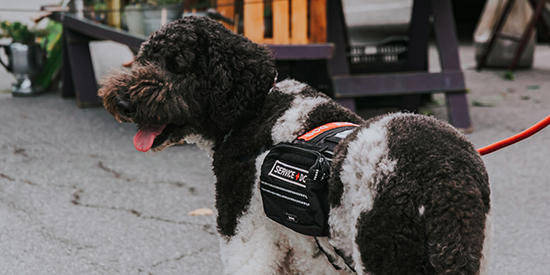Smooth - and less smooth - travel
Imagine that you want to travel by public transport from Amsterdam to Simpelveld, a village in the southwest of the Netherlands. You open your MaaS app, buy your train ticket from Amsterdam to Kerkrade and your bus ticket further onwards to Simpelveld, you jump on the train, catch your connecting bus, and some time later you arrive at your destination. Smooth.
Now, imagine that you want to make exactly the same journey, but you are sitting in a wheelchair and need assistance to get on (and off) the train and to catch your connecting bus. You can, of course, still book your ticket using your favourite MaaS app, and you will be able to make use of the dedicated places on the train and bus. Yet, an essential element of your journey has not been covered: MaaS applications do not allow you to request assistance for boarding the train and connecting to your bus. In this particular case, you will need to create an account at the Dutch railway operator NS and request assistance via the website, NS app, or telephone.

As the example above shows, MaaS does currently not provide a real solution for people with a disability (nor in The Netherlands or elsewhere): it is not yet possible to request assistance or to modify your request (in case of train delays, for instance) through the app. After all, MaaS apps are usually built for the ‘mainstream’ traveller, thereby neglecting the approximately 100 million Europeans with a disability (figures from the European Council).
Various MaaS pilots have tried to incorporate solutions for people with a disability. Unfortunately, we have never seen these solutions scale up. The business model for this particular target group is hard, indeed. But let us not forget that the number of people with disabilities is growing. The need and demand for MaaS applications that are also tailored to the needs of people in a wheelchair, the blind or partially sighted, persons with a hearing impairment, and so forth will thus increase.
Enter: the TOMP-API
Luckily, technology is on our side: the TOMP-API provides a generic solution to cope with physical limitations while travelling thanks to a cooperation with the Traveller’s Dictionary from CROW, the Dutch knowledge centre for infrastructure and transport. The official translation of this dictionary from Dutch into English was done by the TOMP Working Group and is available here.
What you want to achieve as a MaaS-provider is that a traveller with a disability can provide information about his or her specific situation (for instance, “I am in a wheelchair” or “I am partially sighted”). Based on this input, the MaaS app gives an overview of tailor-made journeys, assistance included.
How does this work concretely? The TOMP-API specifies each traveller’s needs using the categorization of the aforementioned Traveller’s Dictionary. For example, an electric wheelchair is coded as ‘HR-02’. Supplying this code when requesting an offer through the traveller’s requirements, should result in an offer that takes this into account. Depending on the code, extra services should be added to the offer, like support on the platform to place a ramp that allows you to board the train or the presence of a staff member who will guide you to your seat.
This feature can be enlarged to other traveller profiles, for example, families travelling with luggage or prams, or persons travelling with a (folding) bike. Again, TOMP allows you to add these specific demands to propose mobility services that take this into account, using the same structures and categorization from the Traveller’s Dictionary.

In summary, the TOMP-API allows the integration of functionality for people with disabilities, but also the needs of those travelling with luggage or bikes. This contributes to the increased uptake of MaaS by adapting it to the needs of an underserved, but growing group of customers.
By TOMP Working Group Members Edwin van den Belt (DAT.Mobility) and Jelten Baguet (Mpact).
